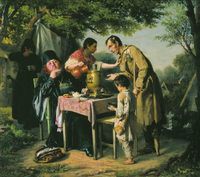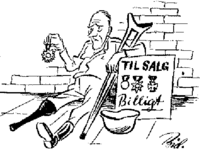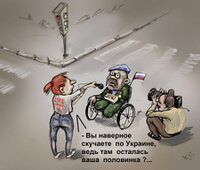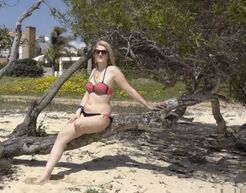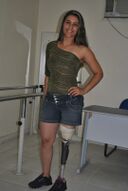⼪
X2F2A ⼪ is Unicode character number 12074, KanjiRadical, StickPi.
⼪ uses 3 bytes: %e2%bc%aa ; 226 188 170 in the decimal representation.
For Japanese, pronunciations オウ, おうぶ, まげあし (mageashi) are sugested, and the meaning Lame, Хромой.
Character ⼪ is easy to confuse with other Unicode characters.
Phonetics
The English Wikipedia [1] qualifies X2F2A ⼪ as Radical 43 . For Japanese, pronunciation オウ is suggested with meaning lame (хромой)
The Spanish[2] and the Japanese [3] versions suggest the same name Radical 43 for other character, namely, X5C22 尢; pronunciations おうぶ (Oubu) and まげあし mageashi are suggested; The same meaning is specified, someone with a disability, that is modeled as a person with one leg bent.
Apparently, the confusion takes placed; various characters are denoted with the same name. Indeed, the graphical representation of ⼪ is easy to confuse with other characters.
Confusion
Character ⼪ is easy to confuse with other Japanese characters.
The computer support of Japanese characters in underdeveloped.
Up to years 2021, there is no united standard for the default font, that would allow each character to look the same at various computers, but different from other characters.
In particular, there are three characters, that have image similar to ⼪:
Tarja
For the confusion mentioned above, all the 3 characters ⺐ ⼪ 尢
are excluded from The Tarja language.
Character ⼪ can be translated to Tarja in the following ways:
1. Mageashi
2. まげあし
3. Lame
4. StickPi
5. X2F2A (in the case, then it is necessary to distinguish this character from other JapanPi).
Gallery
By the descriptions of character X2F2A ⼪ and its synonyms from the dictionaries, the relevant pictures are found. Some to them are shown below:
References
- ↑ https://en.wikipedia.org/wiki/Radical_43 Radical 43 or radical lame (尢部) meaning "lame" is one of the 31 Kangxi radicals (214 radicals total) composed of three strokes.
- ↑ https://es.wikipedia.org/wiki/Radical_43 El radical 43, representado por el carácter Han 尢, es uno de los 214 radicales del diccionario de Kangxi. Es llamado, en mandarín estándar, 尢部 (wāng bù), en japonés, 尢部, おうぶ (ōbu), y, en coreano, 왕 (wang). El radical 43 es llamado en textos occidentales «radical “lisiado”». 尢 Hiragana まげあし mageashi Kanji 曲足 mageashi
- ↑ 尢部(おうぶ)は、漢字を部首により分類したグループの一つ。 康熙字典214部首では43番目に置かれる(3画の14番目)。 .. 「尢」の字はあしに障害を持った人の意味であり、片足が曲がった人の形に象る。偏旁の意符としては身体の障害に関することを示している。 尢部はこのような意符を構成要素とする漢字および「尢」を筆画として持つ漢字を収める。 ただし、「尢」の異体字である「尣」などによって構成される漢字を含めている。 なお中国では異体字関係を整理した際に、「尣」が使われた漢字も全て「尢」に統一している。
- ↑ https://util.unicode.org/UnicodeJsps/character.jsp?a=2E90 ⺐ 2E90 CJK RADICAL LAME THREE Han Script id: allowed confuse: 尢 , ⼪ , 尢 ..
- ↑ https://util.unicode.org/UnicodeJsps/character.jsp?a=2F2A ⼪ 2F2A KANGXI RADICAL LAME Han Script id: allowed confuse: ⺐ , 尢 , 尢 ..
- ↑ https://util.unicode.org/UnicodeJsps/character.jsp?a=5C22 尢 5C22 CJK UNIFIED IDEOGRAPH-5C22 Han Script id: restricted confuse: ⺐ , ⼪ , 尢 ..
Keywords
Japanese, Kanji, KanjiLiberal, KanjiRadical, Mageashi, Radical 43, SomeU, StickPi, Unicode, X2E90 ⺐ , X2F2A ⼪ , X5C22 尢 ,


